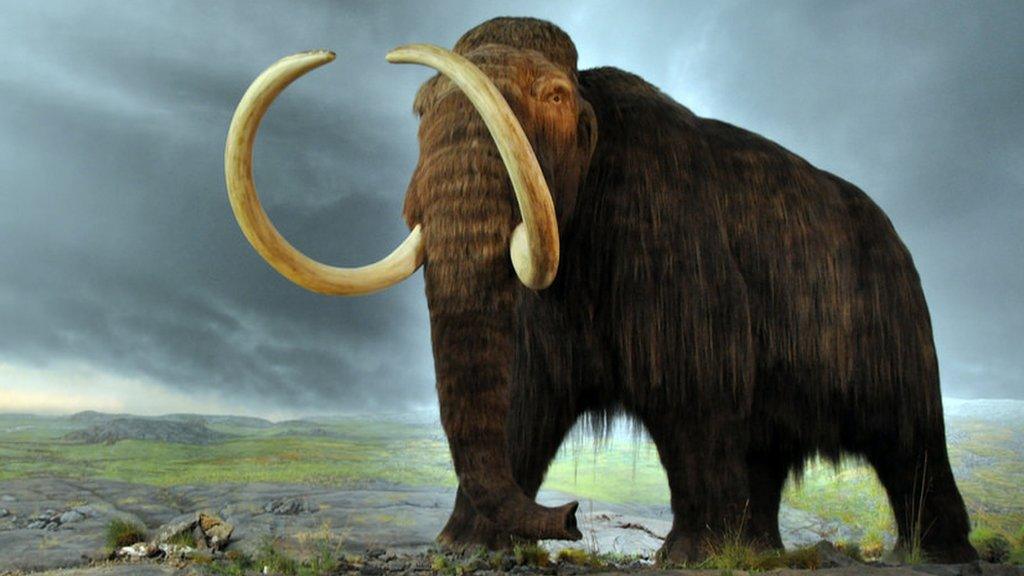West Mersea mammoth tusk 'dates back 12,000 years'
- Published
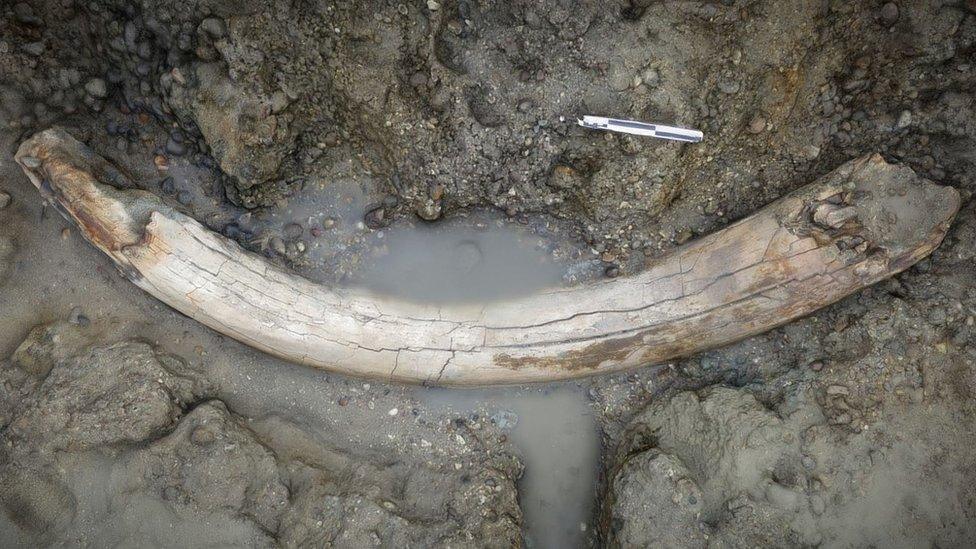
The 6ft (2m) long tusk has been made into a 3D model
A mammoth tusk discovered during an unusually low tide could be up to 12,000 years old, experts believe.
The 6ft (2m) tusk, which was found off the coast of Mersea Island, Essex, dates back to the Devensian, or last glacial period.
It was found by archaeologists last March, who said the tusk was exposed for just 30 minutes and was too fragile to lift.
Project officer Stephanie Ostrich said it was "needle in a haystack moment".
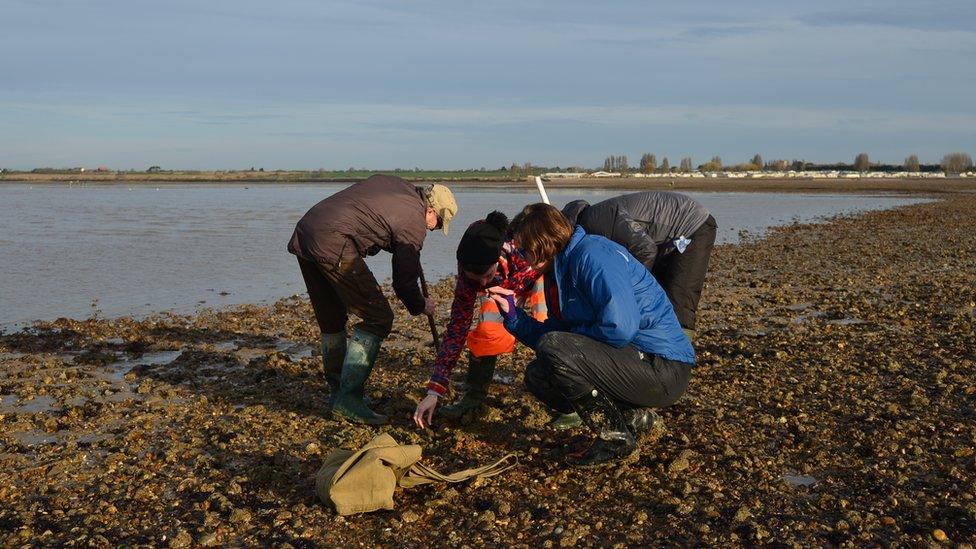
The moment a group of archaeologists and volunteers unearthed the tusk last March
Members of the Coastal and Intertidal Zone Archaeological Network (CITiZAN) found the tusk during a field walk along Mersea's beach. The rare low tide allowed them to explore the area about 1km (0.6m) out from Cooper's Beach Holiday Park.
"It was very, very fragile so we didn't even attempt to lift it," she said.
"The Victorians would have made a plastercast to create a replica but we didn't have much time so took lots of pictures and samples so we could make a 3D model."
You may also like:
Experts from the Natural History Museum believe the tusk was found in what would once have been a marsh or freshwater channel.
Scientific analysis of samples from the tusk and the surrounding sediment show it was also found in "more or less in the same position as when the animal foundered".
Ms Ostrich said Essex was a "well-known area for megafauna" but it still "quite rare" to come across well-preserved mammoth tusks.
She added: "People often ask archaeologists what the best thing they've found is - now I have an answer."
- Published19 October 2018
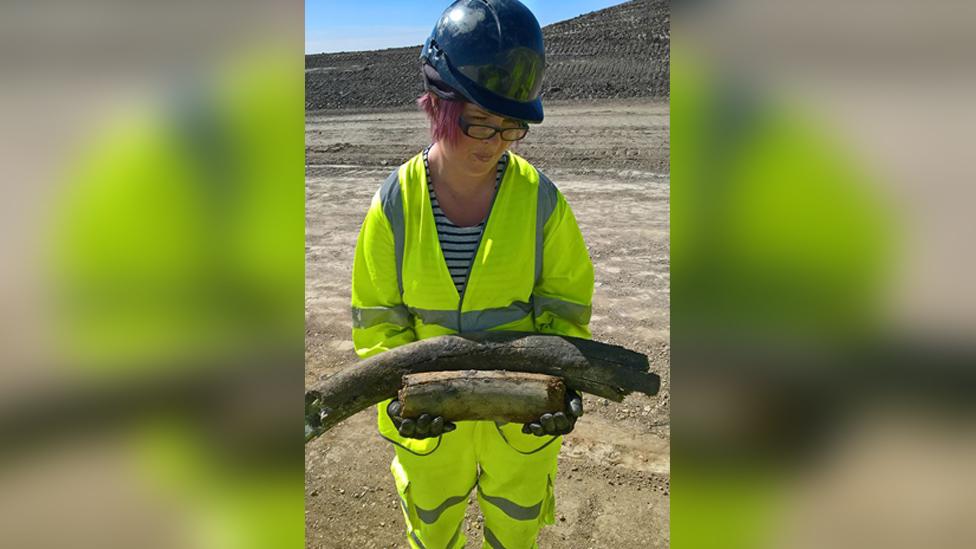
- Published30 March 2017
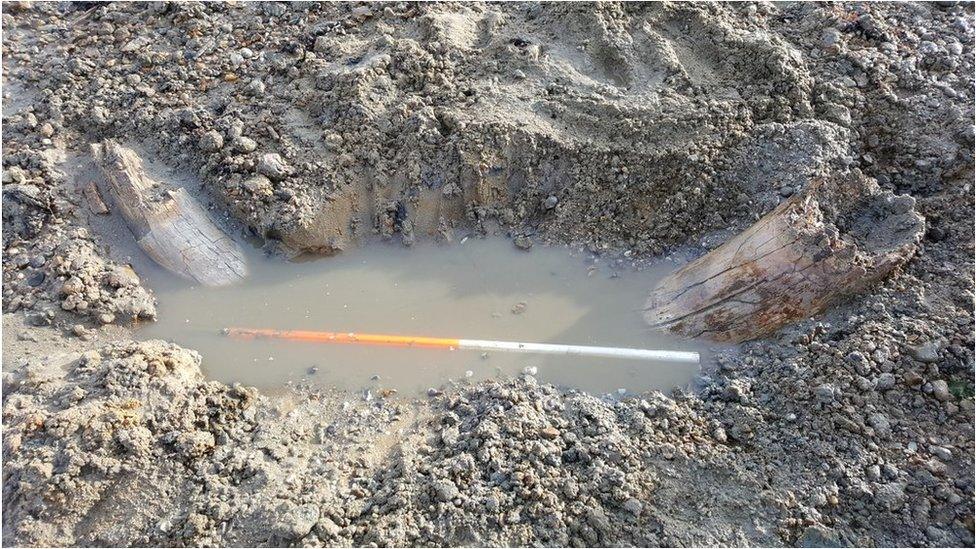
- Published3 March 2017

- Published13 August 2015
